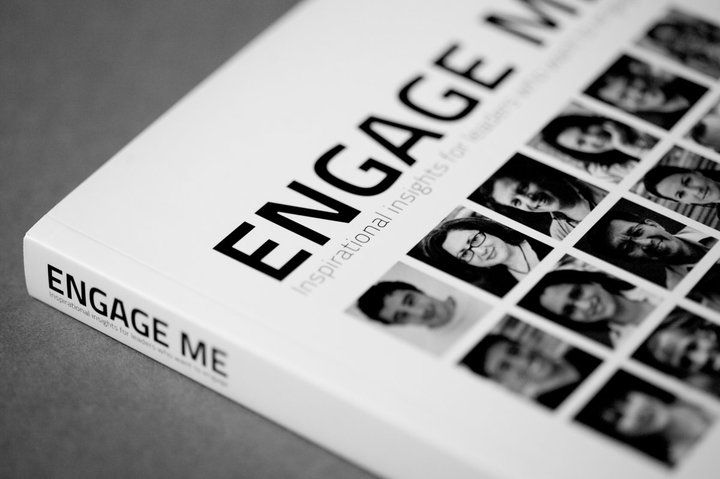The Neuroscience Of Collaboration: Why We Must Bring Back Team-Building Days
For years, organisations invested in team-building retreats to foster trust, camaraderie and collaboration.
And for good reason: it worked.
I still vividly remember leading a group of Executives and Senior Managers from LAN Airlines (now LATAM) to a beach resort for a team-building day.
We started with strategic discussions, then moved to a treasure hunt with obstacles, culminating in an all-out water balloon battle that left everyone laughing. What happened that day was transformational. Barriers dissolved, relationships strengthened and over the next 12 months, workplace interactions drastically improved. People who had been at odds were suddenly able to discuss perspectives more openly. A new brain synchrony had been born, before we even knew the science behind it.
The Science Of Synchrony: How The Brain Builds Collaboration
Fast-forward to today, and neuroscience now explains what we experienced firsthand. The Neurolive Project, a cutting-edge study, found that when people engage in shared, live experiences, their brain waves synchronise. This is not just a metaphor; our brains literally align when we are present together in an immersive activity.
What does this mean for collaboration?
- Shared experiences lead to neural synchrony, fostering deeper understanding and connection among team members.
- Neural synchrony enhances communication, making it easier to interpret non-verbal cues and intentions.
- It builds trust, as synchronised brains promote the release of oxytocin, the “trust hormone.”
This is why team-building days were so effective, they weren’t just “fun” events; they were biological rewiring sessions, aligning our mental frameworks for better collaboration.
The Hidden Barrier to Collaboration: The Rise of Conflict in Hybrid Work
Now, let’s consider the flip side: what happens when we lack these shared moments?
Post-pandemic, many organisations have embraced hybrid and remote work, which certainly has its benefits. But something fundamental has been lost: face-to-face, in-the-moment human interactions that build trust and resolve misunderstandings before they escalate.
Neuroscience confirms this:
- Conflict increases in the absence of physical presence. Without in-person cues like tone, facial expressions and body language, misunderstandings multiply.
- The amygdala (our brain’s “threat detector”) becomes more sensitive when interactions lack social warmth. Text-based communication can easily be misinterpreted, leading to heightened defensiveness and stress.
- Teams are less likely to resolve disagreements promptly without real-time interaction. The lack of immediate feedback loops allows conflicts to simmer longer than necessary.
The Neuroscience of Conflict: Why Contempt Destroys Collaboration
Renowned psychologist John Gottman has extensively studied conflict resolution, identifying one particularly destructive force: contempt.
Unlike simple disagreement, contempt is poisonous to relationships. It manifests as eye-rolling, sarcasm and dismissive attitudes… and once it enters a team dynamic, collaboration erodes.
Contempt is the type of emotion that activates the amygdala’s threat response, making logical discussions nearly impossible. When this happens, the brain responds in a particular way:
- The prefrontal cortex (responsible for rational thinking and problem-solving) is overridden by emotion.
- The brain produces more cortisol (the stress hormone), reducing trust and increasing hostility.
- People stop listening and become defensive, leading to workplace silos and disengagement.
The Solution: Face-to-Face Engagement to Reset the Brain
I propose that to reduce conflict and enhance collaboration, teams need regular face-to-face interactions, even if it’s just a couple of days a week.
Live team-building experiences (like off-site, workshops or shared projects) create new brain synchrony and reset relationships.
In-person meetings help resolve misunderstandings faster, preventing unnecessary conflicts from escalating.
Structured conflict resolution training can teach teams to replace contempt with constructive disagreement techniques, such as active listening and perspective-sharing.
The Call to Action: Rebuilding Collaboration in a Hybrid World
Now that we understand what drives successful collaboration and what causes it to break down, it’s time to think how to improve workplaces.
Reintroducing structured, in-person team-building days isn’t just a nice-to-have; it’s a strategic necessity for fostering brain synchrony, trust and seamless collaboration.
Face-to-face engagement accelerates problem-solving, strengthens relationships and reduces unnecessary conflict that often arises in virtual environments.
By prioritising meaningful shared experiences, we create teams that don’t just work together but do better together.
The future of work may be flexible, but human connection remains non-negotiable.
Want to Experience the Power of Brain Synchrony in Real Life?
Join Us.
OPTION 1: WORKSHOPS
VARIOUS DATES & CITIES
Our Brain-Friendly Leadership Certification offers science-backed tools to improve decision-making, performance, collaboration, innovation and agility.
OPTION 2: RETREAT
BALI • AUGUST 9 - 13, 2026
Join us in paradise for our i4 Neuroleader™ Methodology Certification Retreat, where you’ll experience immersive, brain-enhancing activities designed to reset your nervous system, build trust and reconnect with your leadership purpose.

Sources:
- Neurolive Project – The neuroscience of live, shared experiences and neural synchrony in collaboration. McCrum, K. (2024, November 1). ‘It’s like collective daydreaming’: The giant study showing how dance affects the brain. The Guardian.
- Siegel, D. J. (2020). The developing mind: How relationships and the brain interact to shape who we are (3rd ed.). Guilford Press.
- The Gottman Institute. (n.d.). The Four Horsemen: Contempt.
- Goleman, D. (2006). Social intelligence: The new science of human relationships. Bantam Books.
- i4 Neuroleader (353)
- Leadership & Culture (336)
- Brain Health & Wellbeing (206)
- Innovation (97)
- Performance (85)
- Our News (79)
- Collaboration (68)
- Agility (53)
- Practitioner Stories (44)
- In The Press (36)
- Make Me A Leader (33)
- Balance (31)
- Integration (30)
- Imagination (29)
- Awareness (23)
- Brain-Friendly Channel (22)
- Brain-Friendly Leadership (22)
- Communication (22)
- Curiosity (21)
- Inspiration (19)
- Intuition (19)
- Attitude (17)
- Courage (16)
- Adaptability (14)
- Case Studies (14)
- Drive (14)
- Generosity (13)
- Ethics (9)
- Mental Readiness (9)
- Influence (8)
- Retreat (8)
- Brain-Friendly Leadership (1)
- Oracle Cards (1)
- 1 November 2025 (2)
- 1 September 2025 (3)
- 1 August 2025 (5)
- 1 July 2025 (5)
- 1 June 2025 (2)
- 1 April 2025 (1)
- 1 March 2025 (8)
- 1 February 2025 (3)
- 1 September 2024 (4)
- 1 July 2024 (2)
- 1 June 2024 (6)
- 1 May 2024 (2)
- 1 April 2024 (3)
- 1 March 2024 (1)
- 1 November 2023 (1)
- 1 August 2023 (1)
- 1 July 2023 (2)
- 1 June 2023 (2)
- 1 May 2023 (4)
- 1 April 2023 (2)
- 1 March 2023 (7)
- 1 February 2023 (4)
- 1 January 2023 (1)
- 1 September 2022 (1)
- 1 May 2022 (3)
- 1 April 2022 (1)
- 1 March 2022 (5)
- 1 February 2022 (4)
- 1 January 2022 (4)
- 1 December 2021 (2)
- 1 November 2021 (4)
- 1 October 2021 (3)
- 1 September 2021 (6)
- 1 August 2021 (1)
- 1 April 2021 (1)
- 1 December 2020 (2)
- 1 November 2020 (1)
- 1 September 2020 (1)
- 1 August 2020 (1)
- 1 July 2020 (3)
- 1 June 2020 (4)
- 1 May 2020 (3)
- 1 April 2020 (4)
- 1 March 2020 (6)
- 1 February 2020 (4)
- 1 January 2020 (2)
- 1 December 2019 (3)
- 1 November 2019 (3)
- 1 October 2019 (5)
- 1 September 2019 (4)
- 1 August 2019 (4)
- 1 July 2019 (4)
- 1 June 2019 (5)
- 1 May 2019 (9)
- 1 April 2019 (9)
- 1 March 2019 (8)
- 1 February 2019 (7)
- 1 January 2019 (8)
- 1 December 2018 (5)
- 1 November 2018 (10)
- 1 October 2018 (16)
- 1 September 2018 (9)
- 1 August 2018 (10)
- 1 July 2018 (9)
- 1 June 2018 (8)
- 1 May 2018 (9)
- 1 April 2018 (9)
- 1 March 2018 (9)
- 1 February 2018 (8)
- 1 January 2018 (8)
- 1 December 2017 (6)
- 1 November 2017 (9)
- 1 October 2017 (9)
- 1 September 2017 (8)
- 1 August 2017 (10)
- 1 July 2017 (8)
- 1 June 2017 (8)
- 1 May 2017 (9)
- 1 April 2017 (8)
- 1 March 2017 (6)
- 1 January 2017 (3)
- 1 December 2016 (4)
- 1 November 2016 (5)
- 1 October 2016 (4)
- 1 September 2016 (2)
- 1 August 2016 (4)
- 1 July 2016 (4)
- 1 June 2016 (2)
- 1 May 2016 (3)
- 1 April 2016 (3)
- 1 March 2016 (7)
- 1 February 2016 (2)
- 1 January 2016 (5)
- 1 December 2015 (2)
- 1 November 2015 (2)
- 1 October 2015 (4)
- 1 September 2015 (2)
- 1 August 2015 (2)
- 1 July 2015 (1)
- 1 June 2015 (3)
- 1 May 2015 (4)
- 1 April 2015 (5)
- 1 March 2015 (3)
- 1 February 2015 (3)
- 1 January 2015 (3)
- 1 December 2014 (3)
- 1 November 2014 (3)
- 1 October 2014 (3)
- 1 September 2014 (5)
- 1 August 2014 (4)
- 1 July 2014 (5)
- 1 June 2014 (3)
- 1 May 2014 (1)
- 1 March 2014 (1)
- 1 December 2013 (2)
- 1 November 2013 (1)
- 1 July 2013 (1)
- 1 June 2013 (1)
- 1 May 2013 (3)
- 1 April 2013 (1)
- 1 March 2013 (2)
- 1 February 2013 (1)
- 1 January 2013 (2)
- 1 November 2012 (1)
- 1 October 2012 (1)
- 1 September 2012 (1)
- 1 August 2012 (2)
- 1 July 2012 (1)
- 1 June 2012 (1)
- 1 May 2012 (2)
- 1 April 2012 (1)
- 1 February 2012 (1)
- 1 January 2012 (1)
- 1 November 2011 (1)
- 1 October 2011 (3)
- 1 September 2011 (2)
- 1 July 2011 (1)
- 1 June 2011 (1)
- 1 May 2011 (1)
- 1 April 2011 (1)
- 1 March 2011 (1)
- 1 February 2011 (2)
- 1 January 2011 (4)
- 1 December 2010 (4)
- 1 November 2010 (3)
- 1 October 2010 (5)
- 1 September 2010 (4)
- 1 August 2010 (4)
- 1 July 2010 (3)
- 1 June 2010 (4)
- 1 May 2010 (7)
- 1 April 2010 (5)
Subscribe by email
You May Also Like
These Related Stories

Engage Me - Inspirational Insights For Leaders Who Want To Engage

4 Methods to Increase Your Influence with Others




No Comments Yet
Let us know what you think